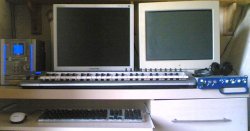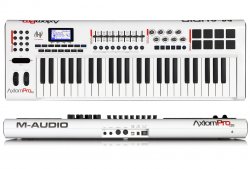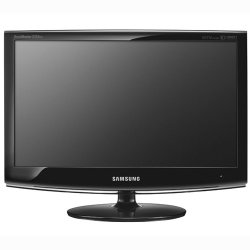I've used lowendmac in the past to do this, and since the objective here is to find the 'starting at' (minimum buy-in) base price, the prices that they have listed are IMO generally sufficient.
If you search my posts, you should be able to find it, but I've restated some of it here.
Not in my assessment.
First off, the prices you're talking about generally went "High-High-Low-High". It hasn't been a ramp-up unless you ignore roughly half of the Mac's lifespan, and start counting only quite recent stuff.
Second, $2000 in 1993 isn't still worth $2000 today. Regardless of what we want to debate regarding inflation -vs- technology (hence, Geekbench), the simple bottom line is that our baseline wages & salaries have gone up, so the cost of a $2000 PC today is a smaller slice of our income than the "same" $2000 was 5-10-15 years ago.
For example, as per
this online tool baed on the Consumer Price Index:
What cost $2000 in 1993 would cost $2944.06 in 2008.
And what would cost $2000 in 2008 would have cost $1369.22 back in 1993.
Thus, if we plug in to today a value of $2500 as a ballpark for a basic Mac Pro, what we find is the following comparisons:
1993 Equivalent: $1711.52
1998 Equivalent: $1942.00
2003 Equivalent: $2179.86
And if we go look for historical Mac baseline hardware for those years, we find:
1993:
Centris 610 introduced 1993.02.10 at $2,520;
That $2520 today would be $3709.52
Conclusion: 1993 was ~48% more expensive than today.
1998:
Beige G3/233 introduced 1997.11.15 at $1,999;
That $1999 today would be $2629.10
Conclusion: 1998 was slightly ~5% more expensive than today.
2003:
PowerMac G5/1.6GHz (IMO a poor machine): $1,999;
reduced on 11/03 to $1,799;
The (IMO better) 1.8 GHz sold for $2,399;
That $1999 today would be $2335.33, and
the price-reduced $1799 would be $2101.68 today.
FYI, the better 1.8GHz $2399 would today be $2802.63
And FYI, yes I am aware of the 1.8 GHz single 256/80 introduced 2004.10.19 at $1,499 (discontinued 2005.06.20). The problem was that it was a sour lemon 'Road Apple' that was actually slower than the older 2003 1.6GHz because its FSB was lobotimized to 1/3rd speed (600MHz), whereas the other PM G5's had used 1/2 speed (1.6GHz used 800MHz and the older 1.8GHz was 900MHz).
Nevertheless, if you really wanted this $1499 Road Apple reject today, it would still cost you $1695.26 ... which is more than a 24" iMac.
Conclusion: 2003 was ~15% less expensive to ~10% more expensive than today, depending on if you avoided lemons.
EDIT: and 2004 had a really cheap lemon if you really were desperate.
FWIW, I picked 1993-1998-2003 as simply being convenient 5 year increments from the most recent date available in the CPI tool (2008). For those that are interested, this exercise can be done at a higher resolution on a year-by-year basis, similarly using whatever can be found for MSRPs of various Mac models from sources such as LEM.
For example, to step back just a little bit further to what can be said was Apple's first "entry" tower, that would be the IIcx.
The IIcx listed for $5369 back in 1989, which is the modern equivalent of spending $9208.59 for a home computer.
And to put things into further perspective, the IIcx was $2,400 cheaper than the IIx back in 1989, which in today's dollars is a $4,116.34 price difference between models.
-hh




